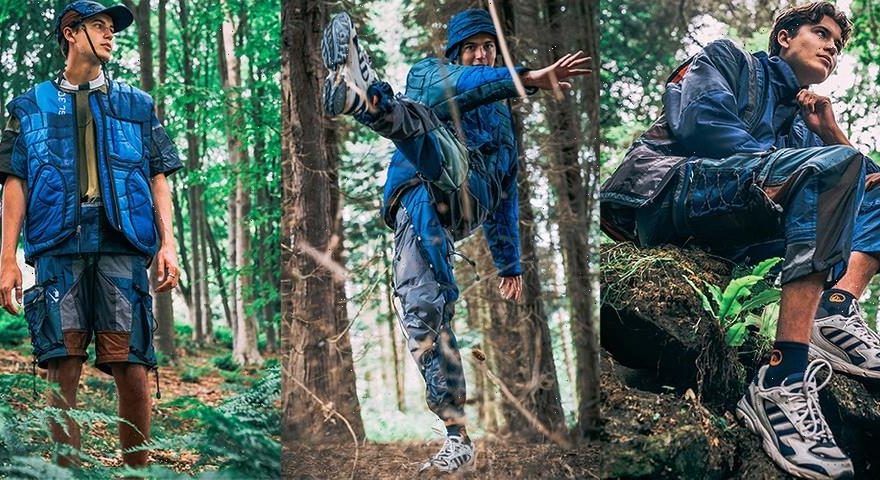For the British designer Molly Sellars, inspiration came from an unexpected place. “Every year since I was 16 I’ve gone to the local music festival,” she tells HYPEBEAST. “As people left, I saw and struggled to accept the number of trashed tents and camping gear that was left behind.” And with good reason: at its peak in 2015, around 11 tonnes of camping equipment was left behind at the U.K.’s Glastonbury festival, costing organizers close over $1 million USD in clean-up operations.
What’s more, most of the abandoned equipment has ended up in landfill — unless it’s repurposed. “I knew using tents as clothing was a concept that had previously been explored,” Sellars says, “but I wanted to explore their potential to become fully functioning garments. I challenged myself to use as many elements of the tents as I could within each of the designs.”
The resulting collection was Sellars’ graduate collection, presented this year as part of her Fashion Design studies at the University of Westminster. The collection itself brings together materials that had been abandoned at music festivals, creating technical trousers and insulated jackets from tents, sleeping bags and more.
“I wanted to explore their potential to become fully functioning garments. I challenged myself to use as many elements of the tents as I could within each of the designs.”
As well as taking influence from Sellars’ own experience of music festivals — and the waste associated with them — the graduate collection also incorporated other personal interests. The use of found and repurposed materials comes from Sellars’ sustainable focus, although the importance of this brought with it its own challenges.
“There were times when I wanted to explore print and other coating mediums,” Sellars says. “But the tents themselves are already hard enough to recycle, so it was important to me to refrain from adding anymore elements that would make the tents hard to recycle in the end. This gave me more motivation to try and use the tents for a secondary purpose, to stop them from entering landfill and instead repurpose them in the hope of prolonging their life.”
While abandoned tents are obviously an unconventional material, for Sellars they were the perfect canvas for her ideas. “Many festival tents are bought solely for the single purpose of that one festival and then discarded,” she says, citing an article from IQ Magazine that describes festival tents as being “in no fit state to be reused.” While the tents may be trashed and battered, simply throwing them away brings with it an array of issues.
“Tents are estimated to sit in landfill for between 1,000 and 10,000 years,” Sellars adds. “Which made repurposing them into usable outdoor clothing and accessories something I wanted to explore.”1 of 5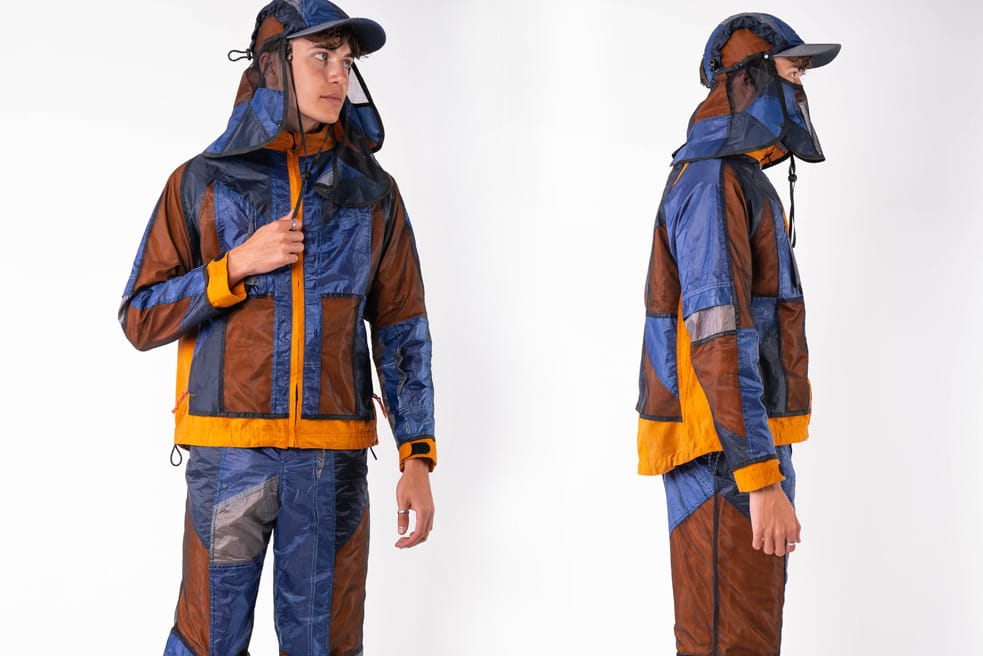
Molly Sellars2 of 5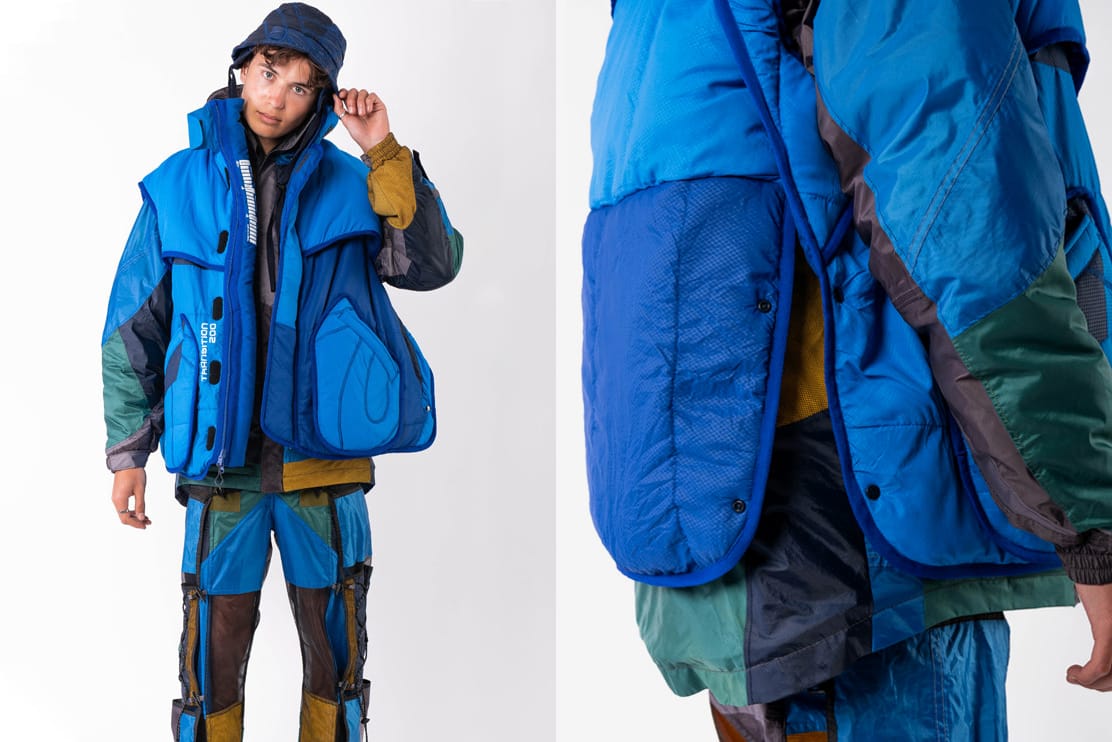
Molly Sellars3 of 5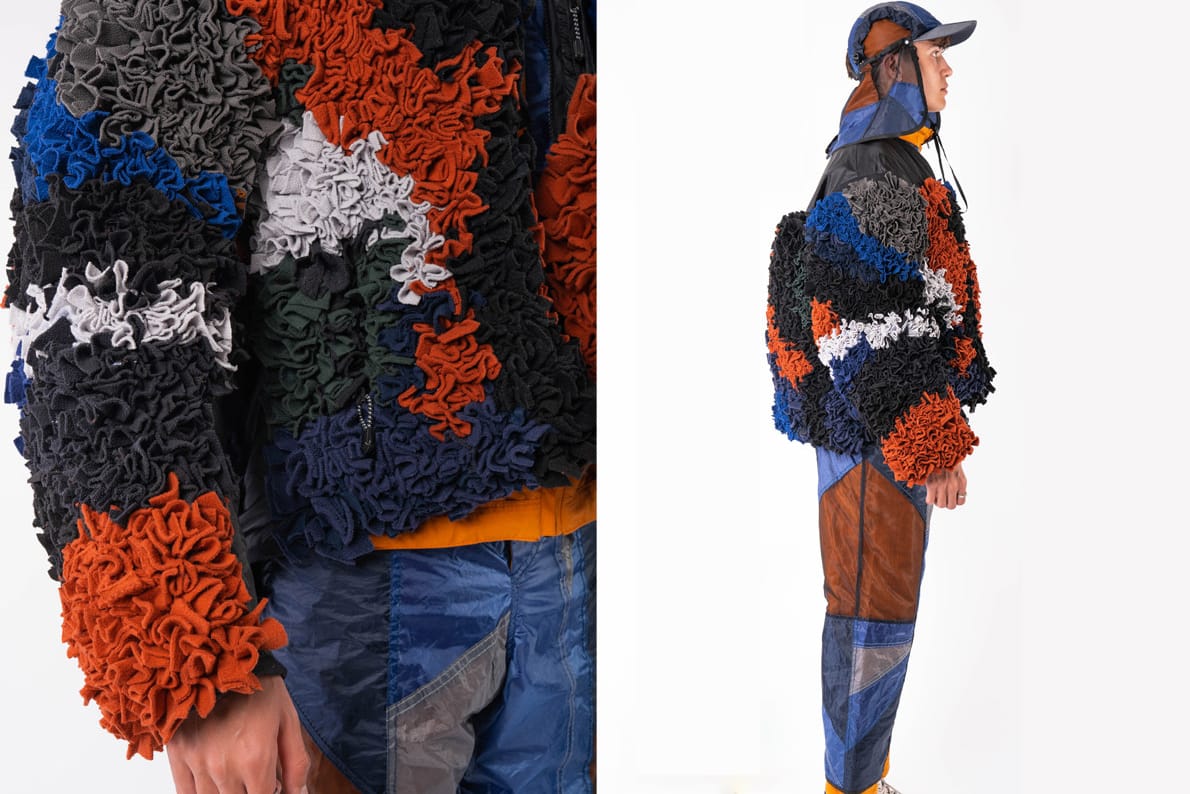
Molly Sellars4 of 5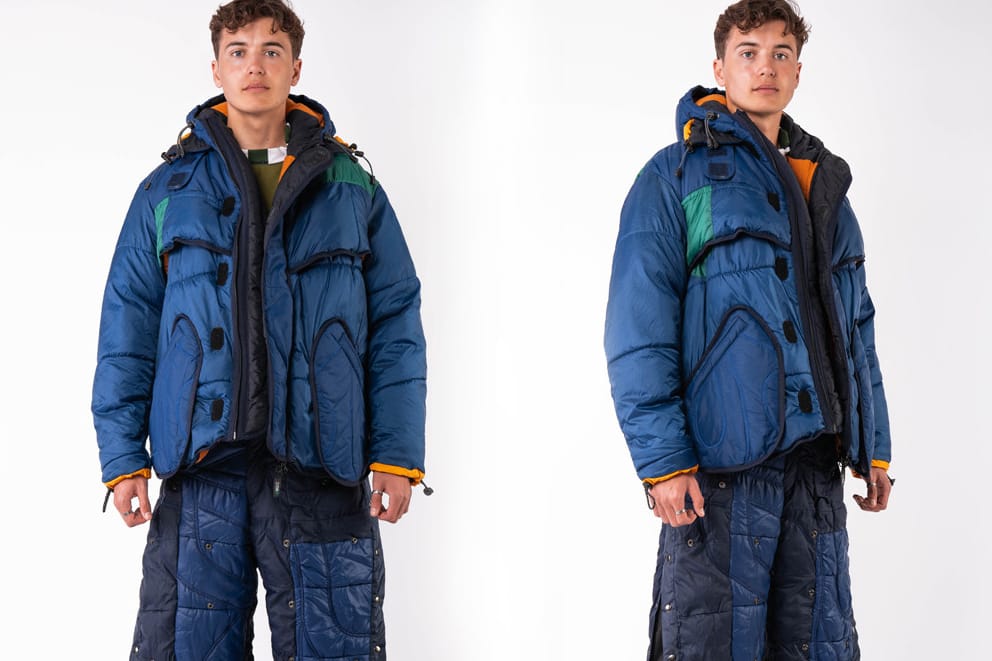
Molly Sellars5 of 5
Molly Sellars
Another influence comes from Sellars’ upbringing in the Lake District, which instilled in her an interest in outdoors clothing. This can be seen in the graduate collection, with its silhouettes and functional ethos referencing the clothing worn in the area known for its stunning scenery and wet weather. “I’ve always rated clothing that performs well and can keep me dry,” Sellars adds. “My early experiences of fashion have all been around clothing suited to deal with the elements. An early personal favourite was my reliable duck poncho that was bright yellow and had an orange beak to keep water from going in my eyes.”
Sellars is still based in the Lake District, in the North West of England — both geographically and culturally a long way from London. It’s her experiences of this landscape and the people within it that have shaped the drive behind Sellars’ graduate collection. “These experiences have led to an interest in developing sustainable outdoor clothing,” she says. “At the moment, a lot of outdoor wear isn’t sustainable. It might be more sustainable than fast fashion as it is often designed to last longer, however the materials are still damaging to the planet.”
“I wanted to explore their potential to become fully functioning garments. I challenged myself to use as many elements of the tents as I could within each of the designs.
The use of abandoned tents is a novel approach to redressing this balance, but Sellars is passionate that the entire outdoors industry needs to have a larger conversation about sustainability. “I still believe that a lot of large brands are doing the minimum to face these sustainability issues,” she continues. “More can always be done, especially surrounding production and sourcing materials.”
Having only unveiled her graduate collection earlier this year, Sellars is now looking to the future. Recently, she opened a pop-up shop in the Lake District town of Penrith, showing people in the area what can be created using repurposed materials. Alongside that, Sellars is developing more wearable designs to further spread the message behind the collection. While
Sellars is aware that, at this early stage of her career, she is only a small player in the industry, she is confident that she has a role to play. “Often, smaller designers can bring about ideas of positive change,” she says. “It’s important to listen and work with them to create a better future for the outdoor clothing world.”
Source: Read Full Article
